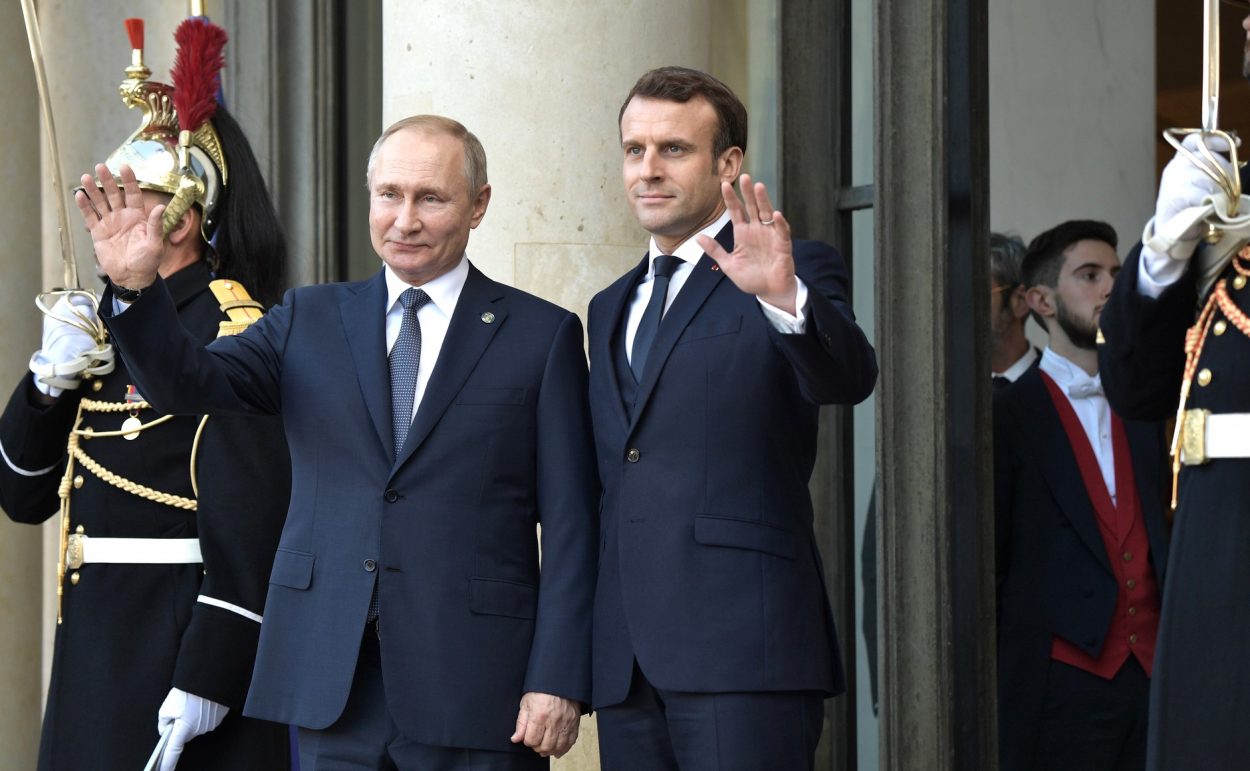Once a peacemaker in the Russia-Ukraine conflict, French President Emmanuel Macron has undergone a remarkable transformation. He has traded diplomacy for a more muscular foreign policy approach towards Moscow.
France’s shift is reportedly embodied in the emergence of the ‘FRAN Group,’ a new military initiative that signals France’s readiness to take a frontline role in aiding Ukraine’s resistance.
Till Russia’s full-scale invasion of Ukraine in February 2022, Macron and Russian President Vladimir Putin had a good working relationship. In the weeks leading up to the conflict, Macron’s diplomatic efforts were unsuccessful in preventing the war, but he maintained communication with Putin for several months after that.
According to a recent report by RTL, a European media outlet, the French armed forces are now preparing a new unit of scouts to support potential offensive operations in Ukraine.
The question arises: Who spoiled the relationship, and why?
The deterioration of Macron’s once-cordial relationship with Putin is a tale of broken communication and shifting priorities. As Putin acknowledged, “At some point, the French President stopped the relationship with us. We didn’t do it; I didn’t. He did.” Macron’s quipped, “I didn’t change my number,” only served to underscore the widening chasm between the two leaders.
Unwavering in its support for Ukraine, France has taken a hardline stance against Russian aggression, advocating for crippling sanctions and a revamp of Europe’s energy policies that will see an end to the reliance on Moscow.
In a substantial military aid package, France is ready to deliver a convoy of aging but formidable armored vehicles to fortify Ukraine’s mechanized corps. Cutting-edge surface-to-air missiles will complement this armored punch, bolstering Kyiv’s ability to contest Russian air superiority.
Yet, even as the drums of war echo across the battlefield, French President Emmanuel Macron is pursuing a parallel diplomatic track. In a recent call with his Ukrainian counterpart, Volodymyr Zelenskyy, Macron emphasized his support for a temporary Olympic truce, urging Russia to down arms and seize “all useful diplomatic initiatives” to revive stalled negotiations. Chinese President Xi Jinping has also endorsed the call for a global truce during the Paris Olympics.
As the world’s spotlight shifts to the City of Lights and its celebrated games, France finds itself at the nexus of a delicate balancing act: providing the military might to sustain Ukraine’s resistance while simultaneously pursuing a diplomatic offramp to quell the raging conflict.
Safeguarding The European Order
In 2021, Ukraine was gearing up for a formal bid for EU membership by 2024, eyeing entry into the European Union sometime in the 2030s. However, the game changed dramatically in September 2022 when Russian President Vladimir Putin launched a full-scale invasion.
Ukraine swiftly shifted gears and submitted a formal application for NATO membership. However, this move encountered strong opposition from heavyweight players like the United States and Germany.
The question of Ukraine’s NATO journey took center stage at the Vilnius Summit. Last July, the NATO Secretary General disclosed that member nations had a consensus: Ukraine would eventually join the alliance post-war. In the interim, with no formal membership offer on the table, several European nations—led by the United Kingdom, Germany, and soon France—pledged to offer security assurances to Kyiv.
France has emerged as a staunch supporter of Ukraine within the European Union (EU). In the wake of Russia’s invasion, France, along with its EU allies, opted to stand beside Ukraine.
The immediate fallout of Russia’s aggression was a seismic shift in Europe’s internal power dynamics. While many European nations, including France, had long regarded threats from the East as manageable compared to those from the South, Putin’s wartime economic maneuvers flipped the script. Suddenly, Russia’s military prowess posed a tangible threat to European security.
This newfound concern has propelled France into action. Faced with the specter of heightened insecurity, France is doubling down on its defense capabilities and reviving its domestic military prowess. With an eye on history, France is on a mission to reclaim its status as the preeminent military force on the European stage.

What Is The FRAN Group?
As the conflict in Ukraine rages on, a new threat looms on the horizon – the FRAN Group, a covert force that represents France’s evolving military posture.
In March 2024, French President Emmanuel Macron surprised fellow European leaders by suggesting that some European countries might consider sending troops to Ukraine to prevent Russia from winning its war of aggression. Macron even refused to rule out the possibility of NATO intervention in Ukraine.
According to a recent RTL report, citing its correspondent who observed the exercises in Estonia, France is testing a new reconnaissance unit as part of a 14,000-strong NATO exercise. This unit could prove useful in Ukraine.
“The purpose of the FRAN group’s exercises is also to show Russia that an invasion [of Estonia] would be a bad idea. Also, to demonstrate to Russia that invading the Baltic states is ‘not a good idea,’” the outlet wrote.
These moves by France have come as Ukraine faces serious problems on the battlefield and as United States military support is delayed. Ukraine’s main aim is to hold firm in the war, but it lacks manpower while fighting a country with a population three times its own. Simply put, Ukraine is struggling to scale up its army.
The FRAN group will be responsible for “going behind enemy lines undetected to provide reconnaissance and trench capture.” This experimental unit, consisting of “ultra-low-visibility soldiers,” is designed to identify enemy trenches and “entry points” to these trenches for subsequent capture. The French military is training “in real conditions.”
The soldiers participating in the exercise can “hide in the bushes for hours in camouflage clothes” using drone video. Soldiers stationed at a height of 200 or 300 meters receive real-time feedback from the cameras about troop movement on the ground, the report stated.
- Opinion by: Shubhangi Palve
- Contact the author at shubhapalve (at) gmail (dot) com.




